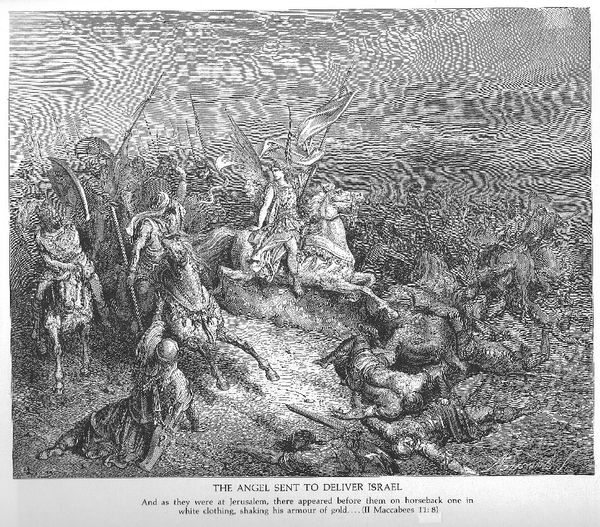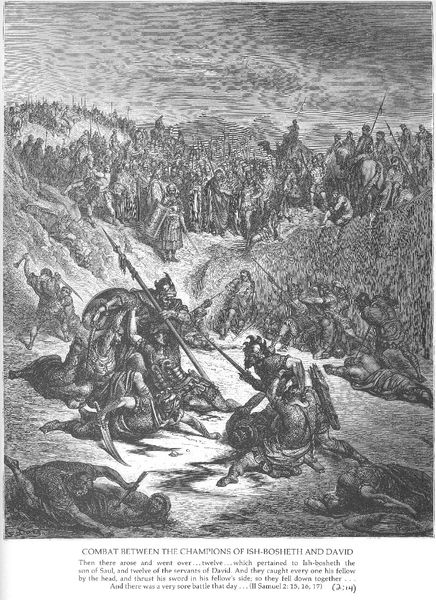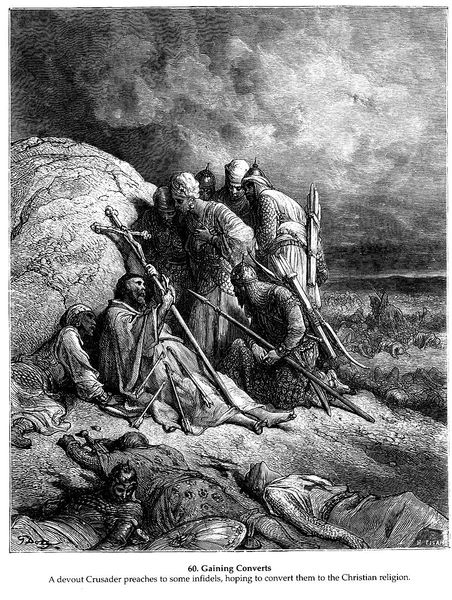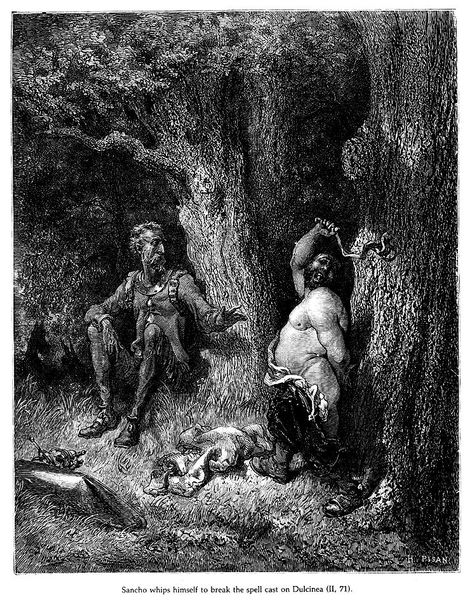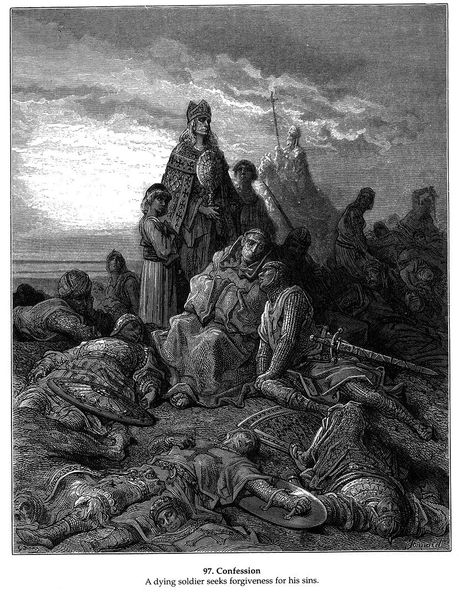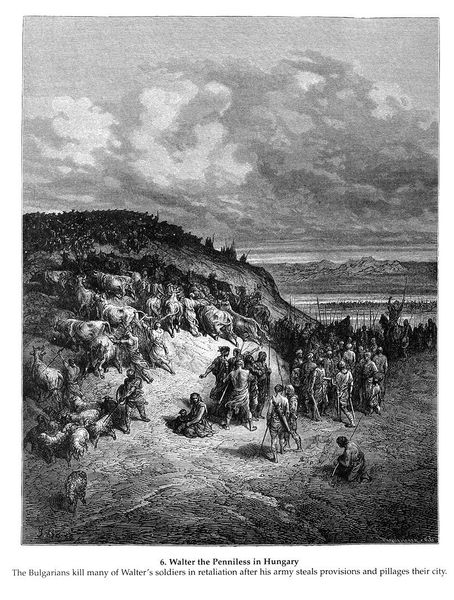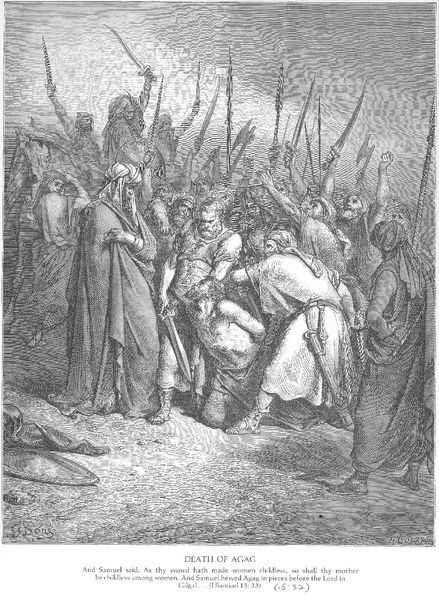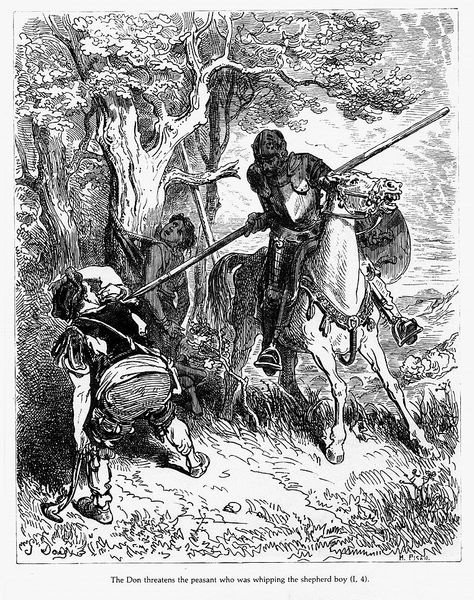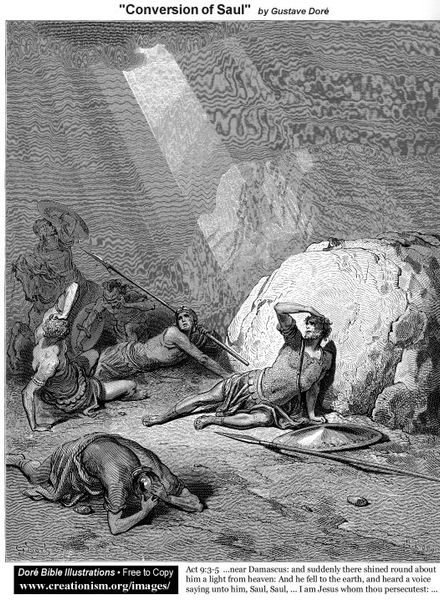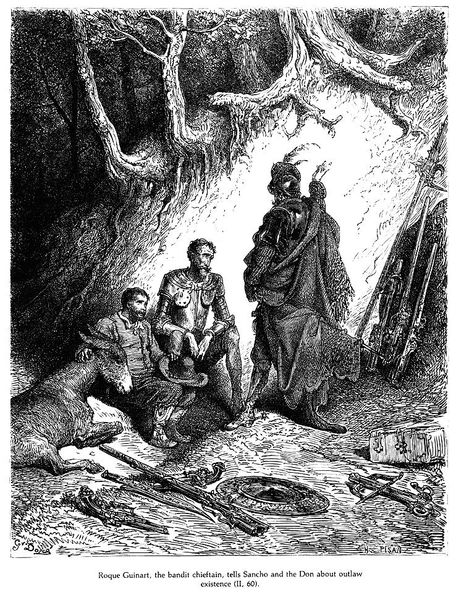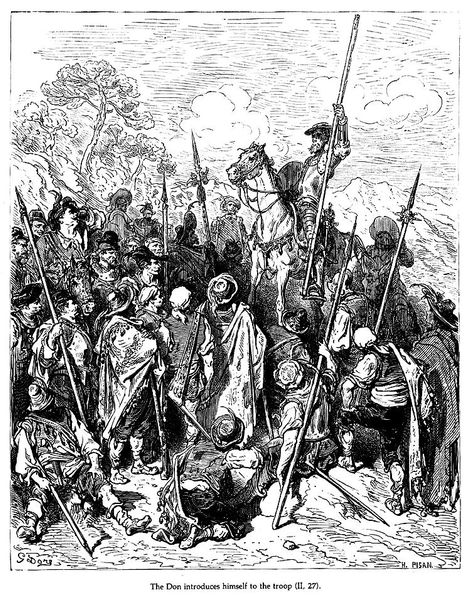
drawing
#
drawing
#
narrative-art
#
animal
#
landscape
#
figuration
#
nature
#
romanticism
#
horse
#
line
#
history-painting
Copyright: Public domain
Curator: Here we see Gustave Dore's rendering of *Don Quixote*. Though undated, its stylistic features certainly place it within his larger body of work illustrating literary giants. What do you make of it? Editor: Well, visually, it's immediately striking. The dramatic chiaroscuro gives it a real sense of heightened tension, doesn’t it? That single light source against all that detail – it’s almost operatic. Curator: Precisely. Dore leverages light and shadow, combined with an abundance of carefully rendered lines to build spatial depth. His expert modulation shapes everything from the rocky terrain to the texture of the foliage. These aren't mere descriptive elements; they create a powerful atmospheric pressure that directs our gaze to key focal points. Editor: And the romantic backdrop really accentuates Don Quixote's idealism. Looking at this from an interpretive point, it highlights the romantic vision that made the character so appealing and, honestly, continues to inspire artistic depictions even now. Think of its lasting impact on political satire! Curator: Consider, too, Dore's position within the historical milieu of book illustration and mass reproduction. His pieces were designed for print. The strong contrast aided legibility. It’s crucial to recall how illustrations disseminated narratives throughout society. They democratized access to visual imagery. Editor: And democratizing access brought challenges as well. An artist’s choices aren't made in a vacuum. Even the specific chapter selected, as implied by the caption below the drawing, tells a story of its own. The choices reflected in what moments from history we showcase really determine not only how art history functions but also how social values are reflected back into art itself. Curator: An astute observation! Perhaps Dore’s *Don Quixote*, above all else, demonstrates the sheer expressive capability that linear depiction retains even amidst historical evolution. Editor: Ultimately, it’s an intersection of aesthetics, function, and social currents converging right there on paper, or nowadays, maybe on a screen. The point remains. Curator: Absolutely.
Comments
No comments
Be the first to comment and join the conversation on the ultimate creative platform.

